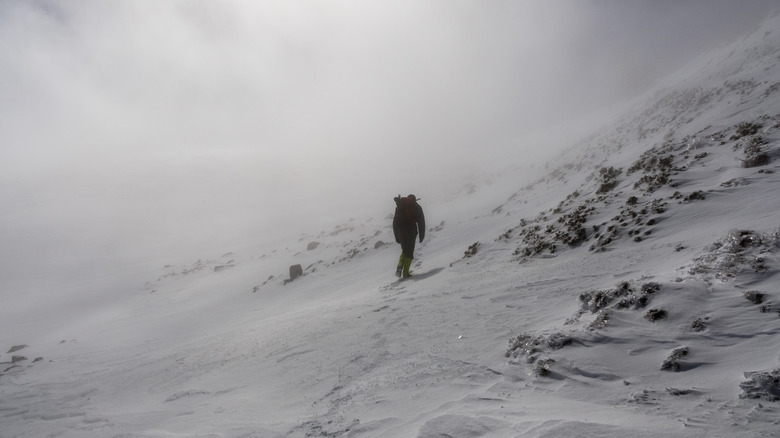Mount San Antonio is the tallest peak in southern California’s San Gabriel Mountains. Most people refer to the peak as Mount Baldy because its summit face is strikingly bare, devoid of trees and other vegetation. Located about 45 miles east of Los Angeles, the giant mountain towers over the surrounding landscape at an impressive 10,064 feet, making it the highest point in Los Angeles County. In addition to being an impressive sight, Mount Baldy is also a popular recreation spot for southern Californians. Throughout the year, it attracts all levels of hikers and climbers to its scenic and unspoiled trails.
Many outdoor adventurers flock to Mount Baldy with one goal in mind — to reach its summit. However, the dangers of this journey should not be underestimated. The most popular 11.3-mile route to the top requires a steep ascent that will leave even trained athletes winded. Because of the difficulty, many unprepared hikers run into trouble when ascending the mountain: Since 2020, more than 100 rescues have been required, and 10 people have tragically lost their lives. Don’t add to these statistics. To do this trek safely, understand the risks and take the necessary precautions.
Risks when hiking on Mount Baldy

The biggest challenge when hiking to the top of Mount Baldy is the physically demanding nature of the climb. The most popular route gains 3,900 feet in elevation over the course of 11 miles. At higher elevations, the air contains less oxygen, making exercise far more grueling. In addition, the high elevation can induce altitude sickness in vulnerable individuals, leading to headaches, nausea, dizziness, and sometimes even more severe symptoms.
Another danger is that some trails — particularly the Devil’s Backbone Trail that traverses Mount Baldy’s east ridge — has rugged, exposed sections with steep drop-offs on either side. Snow and ice can greatly amplify the riskiness of this terrain, transforming rocky trails and ridges into slippery chutes. Icy conditions in these sections have led to slips and falls, some of which have been fatal.
Another weather-related risk is that conditions can change rapidly on any high mountain, catching hikers off guard. Sudden storms, especially in the winter and early spring, can lead to whiteout conditions and heavy snowfall, making the trail treacherous and difficult to follow. Another weather factor that hikers must contend with is the Santa Ana winds, which can be fierce on Mount Baldy’s exposed ridgelines.
Safety tips

Despite these risks, hikers can safely reach the top of Mount Baldy with the right preparation. This starts with a decent understanding of the current trail conditions. Always check the forecast before setting out and be prepared for sudden weather changes. It’s critical to carry the right gear and supplies in your pack, including adequate water, food, thermal and waterproof clothing layers, a map or GPS device, and a headlamp. Don’t attempt to summit Mount Baldy when snow is present on the trails unless you have a helmet and you’re well-versed in using crampons and an ice axe. An additional rule of thumb is to be aware of your physical limitations. Be ready to turn back if weather conditions deteriorate or if you start experiencing symptoms of altitude sickness.
Start your adventure as early in the day as possible. This not only increases the likelihood that you’ll find parking at the trailhead but also gives you enough daylight hours to complete the hike, reducing the risk you’ll get caught in the dark. Hiking in groups is also recommended, so that people can assist one another in case of emergencies. Let someone back home know your hiking plan and expected return time — this can be a lifesaver when the unexpected happens. Finally, take your time on your way to the spectacular summit. Stopping for frequent breaks will not only enhance your enjoyment of the experience but will also ensure that you avoid overexertion and injury.

